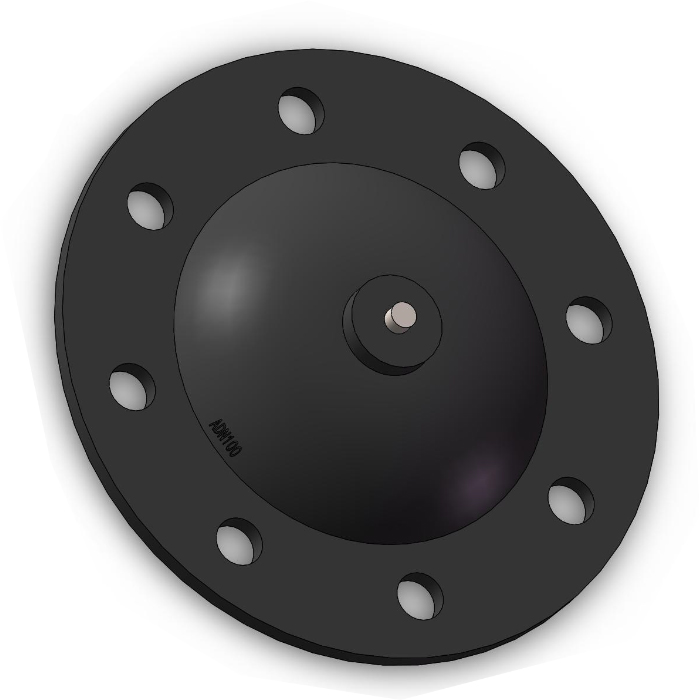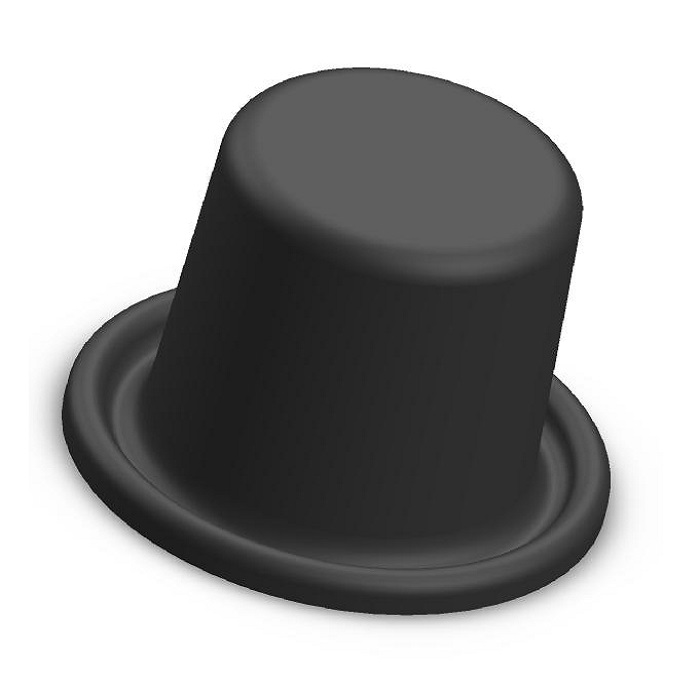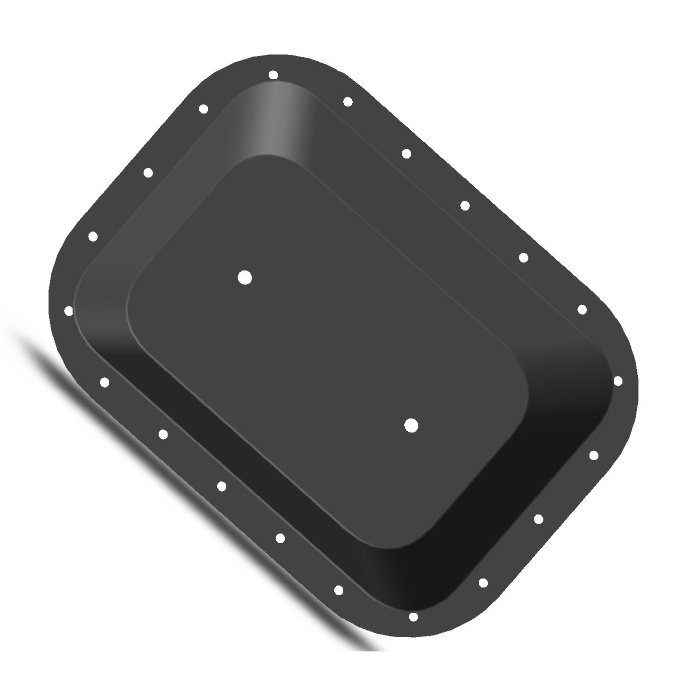GENERAL SEALTECH is engaged in the research, development, production, process, marketing and trade of diaphragms. We have experienced and professional staff members. We have strong mold development capabilities and high precision instruments and equipment.
We specialize in the production of Teflon / PTFE Diaphragm,LPG CNG Diaphragm,Turbo Actuator Waste-gate Diaphragms,Solenoid Pulse Valve Diaphragms,Gas meter diaphragms,Diaphragm Valve pump Diaphragms,etc.After more than 15 years of pioneering venture, we have already become a professional company in the field. We follow the “leading technology, improving quality” principle. Our products are exported to Oceania,Africa,Europe.
| Product name | oxygen regulator diaphragm |
| Place of Origin | China |
| Brand Name | GENERAL SEALTECH |
| Colors | yellow,Recommended black |
| Type | Diaphragm |
| Quality | 100% Inspection |
| Certification | KTW,CCS,NSF,PAHS,RoHS,etc |
| Export region | Europe,Asia,Africa… |
| Export country | USA,Japan,Italy,Australia,Jamaica,Marshall Islands,Lesotho…etc |
| Temperature | -40 °C to +220°C |
| Size | Customizable size |
| Product Material | Silicone,AEM,FKM,NBR,etc |
| Feature | Durable, water/dust/oil proof |
| Packaging Details | Export Standard Packing |
| After-sales Service | Online technical support |
| MOQ | 100 Pieces(negotiable) |
| Port | Ningbo |
| Application | Seal for Automotive,Electrical Appliances,Machine…etc |
| Processing Service | Cutting, Extruded and Moulded, Plastic Packing |
| Properties | Fire Resistance,Oil Resistance,Environment Protective…etc |
| Supply Ability | 50000-200000 Piece/Pieces per Month |
| Lead time (days) | 7-15 (To be negotiated) |
Please note: This table is for reference only, please consult us for specific information.
oxygen regulator diaphragm products typically have high plasticity and can be used in very low temperatures and high temperature ranges. They can also be produced using different technologies such as thin film construction, hot melt construction, and fiber construction.
The diaphragm has strong wear resistance, but it is easily damaged during installation. If cracks appear, they should be reinstalled in a timely manner;
During normal use, check the sealing condition of the diaphragm to prevent water leakage;
Please do not change the installation position of the diaphragm product during use to avoid affecting the effect.
Provide customized services exclusive to customers, and customize various diaphragm products according to their needs to meet the needs of different industries.
oxygen regulator diaphragm—FAQs Guide
2.Do oxygen regulator diaphragm have temperature limitations, and how do they perform in extreme temperature conditions?
3.How do oxygen regulator diaphragm perform in vacuum applications, and are there special considerations for these conditions?
4.How are oxygen regulator diaphragm designed to resist chemical corrosion and degradation in aggressive environments?
5.What is the role of oxygen regulator diaphragm in controlling the flow of aggressive or corrosive chemicals in chemical processing applications?
6.About oxygen regulator diaphragm,Can I get some samples?
7.How do oxygen regulator diaphragm maintain their flexibility and resilience over time, and what factors can lead to wear or degradation?
8.About oxygen regulator diaphragm,How can I get the best price and quality?
9.As a oxygen regulator diaphragm manufacturer,what services can we provide?
10.How do oxygen regulator diaphragm provide sealing solutions in hydraulic accumulators and fluid reservoirs?
11.How do oxygen regulator diaphragm respond to cyclic or pulsating pressure loads, and what is their fatigue life in such conditions?
12.What role do oxygen regulator diaphragm play in controlling fluid flow and preventing leaks in pumps and valves?
13.Are oxygen regulator diaphragm suitable for use in applications involving harsh radiation or extreme pressure differentials?
14.What are the common materials used in diaphragm manufacturing, and how do they impact the diaphragm’s performance?
15.As a oxygen regulator diaphragm manufacturer,Can you supply different color materials?
1.Are oxygen regulator diaphragm used in safety relief valves and pressure relief devices to prevent overpressure situations?
Yes, diaphragms are commonly used in safety relief valves and pressure relief devices to prevent overpressure situations. The diaphragm is a flexible membrane that is designed to open when the pressure inside the device reaches a certain level, allowing the pressure to be released.
2.Do oxygen regulator diaphragm have temperature limitations, and how do they perform in extreme temperature conditions?
Diaphragms do have temperature limitations, and their performance in extreme temperature conditions can vary depending on the material used. Generally, diaphragms are designed to operate within a temperature range of -40°F to +250°F (-40°C to +121°C). In extreme temperature conditions, the diaphragm may become brittle and crack, or the material may become too soft and lose its shape. Additionally, the diaphragm may become distorted due to thermal expansion and contraction.
3.How do oxygen regulator diaphragm perform in vacuum applications, and are there special considerations for these conditions?
Diaphragms are commonly used in vacuum applications to control the flow of air or other gases. They are designed to be flexible and resilient, allowing them to maintain a seal even when exposed to low pressure. Special considerations for vacuum applications include the use of materials that are resistant to corrosion and abrasion, as well as the use of a diaphragm with a larger surface area to ensure a better seal. Additionally, the diaphragm should be designed to withstand the extreme temperatures and pressures associated with vacuum applications.
4.How are oxygen regulator diaphragm designed to resist chemical corrosion and degradation in aggressive environments?
Diaphragms are designed to resist chemical corrosion and degradation in aggressive environments by using materials that are resistant to the specific chemicals present. Common materials used for diaphragms include fluoropolymers, such as PTFE, FEP, and PFA, as well as elastomers, such as EPDM, Viton, and Neoprene. These materials are chosen for their chemical resistance, as well as their ability to withstand extreme temperatures and pressures. Additionally, diaphragms may be coated with a protective layer of a corrosion-resistant material, such as a fluoropolymer or a metal, to further protect them from chemical attack.
5.What is the role of oxygen regulator diaphragm in controlling the flow of aggressive or corrosive chemicals in chemical processing applications?
Diaphragms are used to control the flow of aggressive or corrosive chemicals in chemical processing applications. They act as a barrier between the chemical and the process equipment, preventing the chemical from coming into contact with the equipment and causing corrosion or other damage. Diaphragms are also used to regulate the flow of the chemical, allowing for precise control of the process.

6.About oxygen regulator diaphragm,Can I get some samples?
Yes, Sample order is available for quality check and market test. But you have to pay the express cost.
7.How do oxygen regulator diaphragm maintain their flexibility and resilience over time, and what factors can lead to wear or degradation?
Diaphragms maintain their flexibility and resilience over time by being made of materials that are resistant to wear and tear. Common materials used for diaphragms include rubber, silicone, and polyurethane. These materials are designed to be durable and flexible, and can withstand a wide range of temperatures and pressures.
Factors that can lead to wear or degradation of diaphragms include exposure to extreme temperatures, exposure to chemicals, and physical damage. Additionally, diaphragms can become brittle over time due to age and exposure to the elements. To prevent wear or degradation, it is important to inspect diaphragms regularly and replace them when necessary.
8.About oxygen regulator diaphragm,How can I get the best price and quality?
The price depends on the quantity, design and size. If you order more, the price and shipping will be cheaper.
9.As a oxygen regulator diaphragm manufacturer,what services can we provide?
Free design and samples offered.Custom package and stickers.
10.How do oxygen regulator diaphragm provide sealing solutions in hydraulic accumulators and fluid reservoirs?
Diaphragms provide sealing solutions in hydraulic accumulators and fluid reservoirs by creating a barrier between the fluid and the atmosphere. This barrier prevents the fluid from leaking out and keeps the pressure inside the accumulator or reservoir at a constant level. The diaphragm also helps to reduce the amount of air that can enter the system, which helps to reduce the risk of cavitation.

11.How do oxygen regulator diaphragm respond to cyclic or pulsating pressure loads, and what is their fatigue life in such conditions?
Diaphragms respond to cyclic or pulsating pressure loads by flexing and deflecting in response to the pressure. The fatigue life of a diaphragm in such conditions depends on the material used, the frequency of the pressure load, and the magnitude of the pressure load. Generally, fatigue life is shorter for higher frequency and higher magnitude pressure loads.
12.What role do oxygen regulator diaphragm play in controlling fluid flow and preventing leaks in pumps and valves?
Diaphragms are flexible membranes that are used to control fluid flow and prevent leaks in pumps and valves. They are typically made of rubber or plastic and are designed to flex and move in response to pressure changes. When pressure is applied to one side of the diaphragm, it flexes and creates a seal that prevents fluid from leaking out. This seal is maintained until the pressure is released, allowing the diaphragm to return to its original shape and allowing the fluid to flow freely. Diaphragms are used in a variety of applications, including pumps, valves, and other fluid control systems.
13.Are oxygen regulator diaphragm suitable for use in applications involving harsh radiation or extreme pressure differentials?
No, diaphragms are not suitable for use in applications involving harsh radiation or extreme pressure differentials. Diaphragms are designed to be used in applications with relatively low pressure differentials and are not designed to withstand extreme temperatures or radiation.
14.What are the common materials used in diaphragm manufacturing, and how do they impact the diaphragm’s performance?
Common materials used in diaphragm manufacturing include rubber, silicone, neoprene, polyurethane, and polyester. Each material has its own unique properties that can affect the performance of the diaphragm.
Rubber is a popular choice for diaphragms due to its flexibility and durability. It is also resistant to heat, chemicals, and abrasion. However, rubber can be prone to cracking and tearing over time.
Silicone is a synthetic material that is highly resistant to heat and chemicals. It is also very flexible and can be used in a wide range of applications. However, silicone can be prone to tearing and is not as durable as rubber.
Neoprene is a synthetic rubber material that is highly resistant to heat, chemicals, and abrasion. It is also very flexible and can be used in a wide range of applications. However, neoprene can be prone to cracking and tearing over time.
Polyurethane is a synthetic material that is highly resistant to heat, chemicals, and abrasion. It is also very flexible and can be used in a wide range of applications. However, polyurethane can be prone to cracking and tearing over time.
Polyester is a synthetic material that is highly resistant to heat, chemicals, and abrasion. It is also very flexible and can be used in a wide range of applications. However, polyester can be prone to cracking and tearing over time.
15.As a oxygen regulator diaphragm manufacturer,Can you supply different color materials?
Yes, we can produce custom molded rubber and silicone rubber products in different colors, the color code will be required in case of an order.

Tags: defender pump diaphragm,fabric reinforced rubber diaphragm,bmw 760li high pressure fuel pump diaphragm,reinforced rubber diaphragm material

